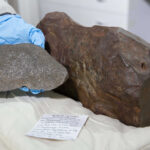State College, PA — A Penn State University graduate, Divya Tyagi, has developed a revised version of a 100-year-old equation originally created by British aerodynamicist Hermann Glauert. The revision improves the accuracy of wind turbine efficiency modeling.
What was missing from Glauert’s original equation?
In the early 20th century, British aerodynamicist Hermann Glauert developed a formula to calculate the maximum power coefficient, a critical measure of how efficiently wind turbines convert wind into electricity. However, Glauert’s equation overlooked key physical forces, such as downwind thrust and root bending moments, which affect turbine durability and performance.
How did Tyagi improve the formula?
Tyagi applied the calculus of variations to incorporate these omitted forces into Glauert’s model. She began the research as part of her undergraduate thesis at Penn State’s Schreyer Honors College. Her revised equation has been published in Wind Energy Science, a peer-reviewed journal.
According to Penn State faculty member and Tyagi’s adviser, Sven Schmitz, the original model lacked components critical for practical application.
“Glauert’s model was very complicated and didn’t account for certain critical factors,” Schmitz said. “If you have your arms spread out and someone presses on your palm, you have to resist that movement. We call that the downwind thrust force and the root bending moment, and wind turbines must withstand that too.”
Why does this revision matter for energy output?
Tyagi stated that even minor improvements in the power coefficient could have significant effects.
“A 1% improvement in power coefficient could notably increase a turbine’s energy output, potentially powering an entire neighborhood,” she said.
The simplified equation is intended to be easier for engineers to use in field applications. It aims to improve the structural and aerodynamic performance of wind turbines, leading to enhanced output and cost efficiency.
What recognition has the work received?
Tyagi received the Anthony E. Wolk Award for the best senior thesis in aerospace engineering at Penn State. Schmitz indicated that the revised model is likely to be integrated into future aerospace engineering curricula and research initiatives.
Tyagi is currently conducting research in computational fluid dynamics (CFD) to study airflow around helicopter rotors. This work is focused on increasing pilot safety during deck landings and may have applications in aerospace and defense sectors.





